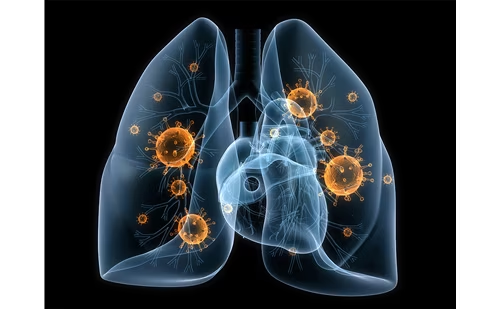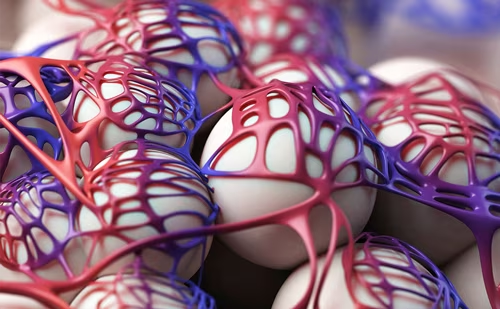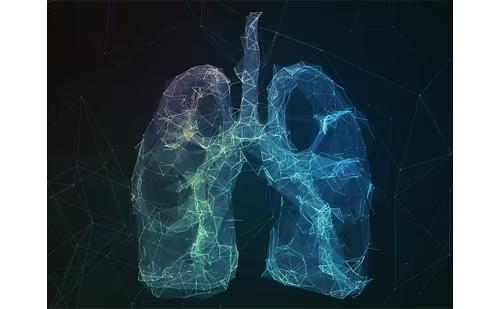Proton pump inhibitors (PPIs) are a class of antacid drugs that are available by prescription and over-the-counter to treat gastro-oesophageal reflux disease in patients with a number of comorbidities, including chronic respiratory diseases, such as asthma, pulmonary arterial hypertension, chronic obstructive pulmonary disease and idiopathic pulmonary fibrosis.1 Although they are generally regarded as safe and effective antacid drugs, there are growing medical concerns over their prolonged use.2 One of the concerns associated with long-term PPI use is the increased risk of microbial infections.3 Several bioinformatics studies and case reports indicate that PPI use is associated with the risk of community-acquired pneumonia.4–6
Intriguingly, the increased infection risk with PPI use does not appear to be reproduced with the use of an alternate class of antacids, histamine H2-receptor antagonists (H2RAs), suggesting that it is unlikely that the change in gastric pH is responsible for the increased risk of infection in PPI users. Accordingly, no mechanistic data exist to explain why PPI use is associated with an increased risk of microbial infections. In this regard, emerging molecular, cell biological and preclinical in vivo data show that PPIs – but not H2RAs – possess biological activities targeted against several immune defence molecules, including tumour necrosis factor alpha (TNFα), interleukin (IL)-1 beta (IL-1β), IL-6 and nuclear factor kappa B (NFκB).7–9 Moreover, PPIs inhibit the activation of neutrophils and monocytes, and deplete intracellular and extracellular neutrophil reactive oxygen species (ROS) and nitric oxide (NO) to impair bactericidal activity.10 Additional studies also have reported that PPIs target inducible nitric oxide synthase (iNOS) and several members of the integrin family including CD11b (integrin αMβ2) and CD18 (integrin β2).7,10–13 Furthermore, several studies have reported significant regulation of TGFβ signalling and the Wnt/β-catenin pathway by PPIs to modulate cell fate, including epithelial-to-mesenchymal transition.7,14–16
It is known that almost all of these biological processes are involved in innate immune defence mechanisms against invading pathogens, including bacteria, viruses and fungi. For example, members of the TNFα superfamily play a significant role in homeostatic processes, including the development and function of the immune system, such as activation of innate lymphoid cells and natural killer cells to limit infections.17 In addition, TNF is able to induce the expression of chemokines and adhesion molecules to participate in the recruitment of neutrophils to the site of infection to contain initial infections.18 In macrophages, TNF has been shown to activate NFκB to enforce an antimicrobial immune defence.19 Moreover, the generation of ROS and NO, two powerful antimicrobial effectors, is reported to be controlled by TNF.20,21 The NFκB pathway is central in the first line of defence against invading pathogens, in part, by being involved in the regulation of innate and adaptive immune response to support T-cell maturation and proliferation. In addition, this pathway is involved in the generation of inflammatory cytokines and other antimicrobial molecules that are necessary in the recruitment of phagocytes and for microbial clearance.22–24
Studies have also demonstrated that interleukins, such as IL-1β and IL-6 induce non-specific resistance to microbial infections.25,26 Another PPI-targeted molecule that is essential in mounting an immune defence against microbial infection is iNOS. This inducible isoform of NO synthase, or the NO generated by iNOS, has been reported to be involved in controlling the intracellular growth of bacteria and in preventing bacterial infection-induced lethality in animal models.27,28 Finally, integrins are involved in cellular processes, including cell adhesion, migration, T-cell activation and phagocytosis to support the immune system. For example, CD11b is expressed in macrophages, monocytes and dendritic cells, which are major cell types that are involved in the innate immune response against microbial infections.29 Furthermore, PPIs may have a direct or indirect effect on the gut microbiome, including bacterial overgrowth and imbalance in the composition of gut microbiota.3,30
Conclusion
Emerging studies indicate that PPIs possess anti-inflammatory activity that extends from the inhibition of classic inflammatory molecules, such as TNFα, interleukins, iNOS and NFκB, to the suppression of adhesion molecules, such as ROS and nitrogen species, and the regulation of inflammatory cells, such as neutrophils and monocytes, without clear evidence about the mechanism of action. Although this multi-faceted, anti-inflammatory activity of PPIs could be harnessed for therapeutic purposes, downregulating inflammatory cells and molecules also impacts proper immune function, including a physiological response to microbial infection, which raises the question of whether the immunosuppressive potential of PPIs is the missing link between prolonged use of the drug and increased risk of infection in some patients. In this regard, additional molecular and pharmacovigilance studies are required to address the possibility of a causal relationship. In the meantime, clinicians should supervise at-risk patients, including the elderly and immunocompromised, from possible harm related to long-term PPI use.







